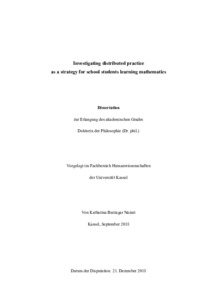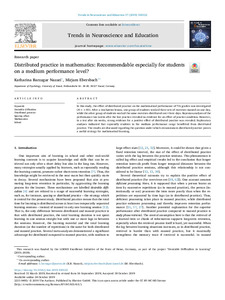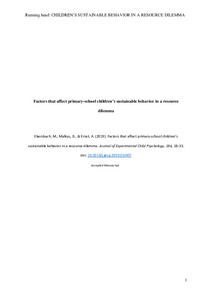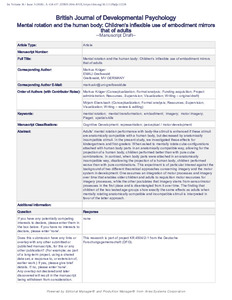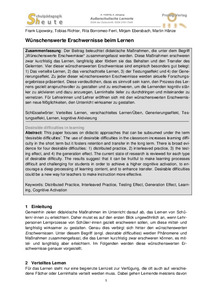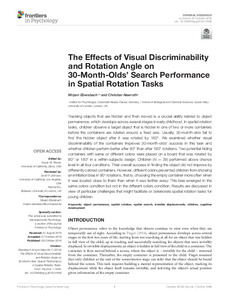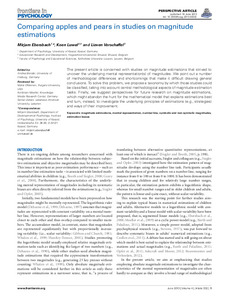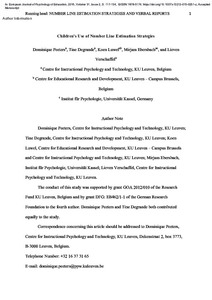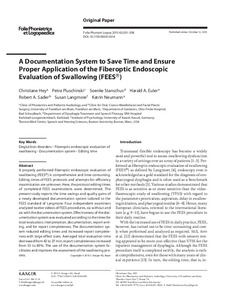Suche
Anzeige der Dokumente 1-10 von 27
Dissertation

 Investigating distributed practice as a strategy for school students learning mathematics
Investigating distributed practice as a strategy for school students learning mathematics
(2018-09)
Spacing or distributed practice is a prominent learning strategy that is related to the so-called desirable difficulties. With distributed practice, a given learning duration is interrupted by at least one break of variable length. In contrast, with massed practice the same total time is spent learning, but without interruption. There is a rich body of empirical evidence proving the positive effect of distributed practice on the retention of verbal material. Beyond rote memory, however, the empirical grounds regarding ...
Aufsatz

 Distributed practice in mathematics: Recommendable especially for students on a medium performance level?
Distributed practice in mathematics: Recommendable especially for students on a medium performance level?
(2019-10-24)
In this study, the effect of distributed practice on the mathematical performance of 7th graders was investigated (N == 81). After a stochastics lesson, one group of students worked three sets of exercises massed on one day, while the other group of students worked the same exercises distributed over three days. Bayesian analyses of the performance two weeks after the last practice revealed no evidence for an effect of practice condition. However, in a test after six weeks, strong evidence for a positive effect of ...
Aufsatz

 Implementing Distributed Practice in Statistics Courses: Benefits for Retention and Transfer
Implementing Distributed Practice in Statistics Courses: Benefits for Retention and Transfer
(2020-11-18)
The present study investigated the effect of distributed versus crammed practice before a course deadline on the retention and transfer of knowledge, and whether learner characteristics moderate the effect. In Experiment 1, only 41% (N = 38) of the initially enrolled students worked the voluntary but recommended practice tasks. Moreover, markedly fewer students did so in the distributed condition (12%) than the crammed practice condition (29%). In Experiment 2, working the practice tasks was mandatory and more students ...
Aufsatz

 Factors that affect primary school children’s sustainable behavior in a resource dilemma
Factors that affect primary school children’s sustainable behavior in a resource dilemma
(2019)
Acting ecologically sustainably and not exhausting natural resources is becoming more and more important. Sustainable behavior can be investigated within the conceptual frame of resource dilemmas, in which users share a common, slowly regenerating resource. A conflict emerges between maximizing one’s own profit and maintaining the resource for all users. Although many studies have investigated adults’ behavior in resource dilemmas, barely anything is known about how children deal with such situations and which factors ...
Aufsatz
 Mental rotation and the human body: Children's inflexible use of embodiment mirrors that of adults
Mental rotation and the human body: Children's inflexible use of embodiment mirrors that of adults
(2018)
Adults’ mental rotation performance with body‐like stimuli is enhanced if these stimuli are anatomically compatible with a human body, but decreased by anatomically incompatible stimuli. In this study, we investigated these effects for kindergartners and first‐graders: When asked to mentally rotate cube configurations attached with human body parts in an anatomically compatible way, allowing for the projection of a human body, children performed better than with pure cube combinations. By contrast, when body parts ...
Aufsatz

 Wünschenswerte Erschwernisse beim Lernen
Wünschenswerte Erschwernisse beim Lernen
(2015)
Der Beitrag beleuchtet didaktische Maßnahmen, die unter dem Begriff „Wünschenswerte Erschwernisse“ zusammengefasst werden. Diese Maßnahmen erschweren zwar kurzfristig das Lernen, langfristig aber fördern sie das Behalten und den Transfer des Gelernten. Vier dieser wünschenswerten Erschwernisse sind empirisch besonders gut belegt: 1) Das verteilte Lernen, 2) das verschachtelte Lernen, 3) der Testungseffekt und 4) der Generierungseffekt. Zu jeder dieser wünschenswerten Erschwernisse werden aktuelle Forschungsergebnisse ...
Aufsatz
 The Effects of Visual Discriminability and Rotation Angle on 30-Month-Olds’ Search Performance in Spatial Rotation Tasks
The Effects of Visual Discriminability and Rotation Angle on 30-Month-Olds’ Search Performance in Spatial Rotation Tasks
(Frontiers Research Foundation, 2016-10-20)
Tracking objects that are hidden and then moved is a crucial ability related to object permanence, which develops across several stages in early childhood. In spatial rotation tasks, children observe a target object that is hidden in one of two or more containers before the containers are rotated around a fixed axis. Usually, 30-month-olds fail to find the hidden object after it was rotated by 180°. We examined whether visual discriminability of the containers improves 30-month-olds’ success in this task and whether ...
Aufsatz

 Comparing apples and pears in studies on magnitude estimations
Comparing apples and pears in studies on magnitude estimations
(2013-06-18)
The present article is concerned with studies on magnitude estimations that strived to uncover the underlying mental representation(s) of magnitudes. We point out a number of methodological differences and shortcomings that make it difficult drawing general conclusions. To solve this problem, we propose a taxonomy by which those studies could be classified, taking into account central methodological aspects of magnitude estimation tasks. Finally, we suggest perspectives for future research on magnitude estimations, ...
Aufsatz
 Children’s use of number line estimation strategies
Children’s use of number line estimation strategies
(2015-03-22)
This study tested whether second graders use benchmark-based strategies when solving a number line estimation (NLE) task. Participants were assigned to one of three conditions based on the availability of benchmarks provided on the number line. In the bounded condition, number lines were only bounded at both sides by 0 and 200, while the midpoint condition included an additional benchmark at the midpoint and children in the quartile condition were provided with a benchmark at every quartile. First, the inclusion of ...

